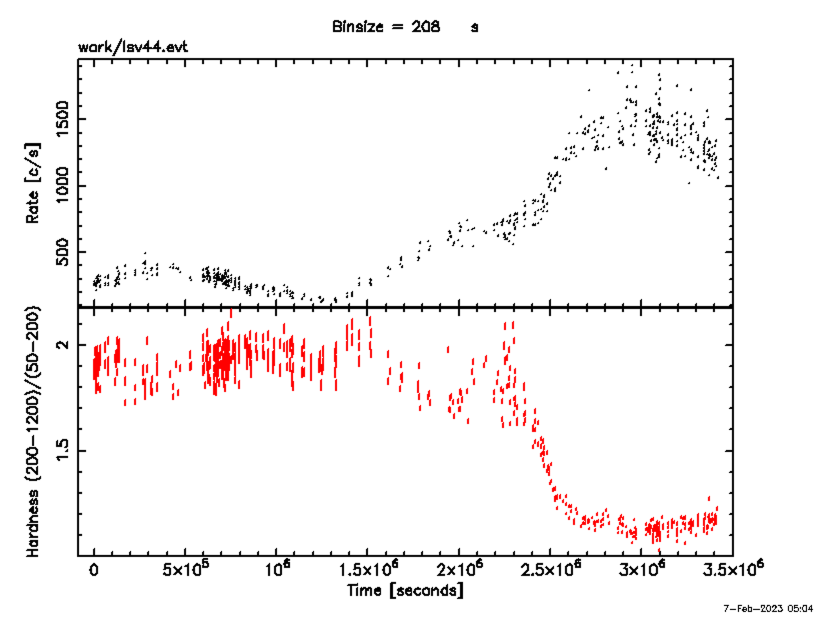NICER / ISS Science Nugget
for February 9, 2023
An Eventual Giant
As reported here recently (5 January), NICER and other high-energy telescopes have been tracking the current outburst -- the first since 2011 and the brightest yet recorded -- of the accreting neutron-star binary system LS V +44 17. Beginning in late December, the outburst initially appeared to be modest, peaking after one week at a few hundred photons per second (ph/s) as measured by NICER and declining by the 15th day to approximately 100 ph/s. Unexpectedly, LS V +44 then began to brighten again; after a week, it appeared to plateau for a days in the vicinity of 600-700 ph/s, but then brightened yet again, rapidly, to over 1500 ph/s. It thus eventually became a "giant outburst", one that exceeds a level of brightness -- and thus the implicated rate of mass transfer between the two stars -- that pits the mass flow against the pressure of photons leaving the neutron star surface. Over the last few days, LS V +44 has finally begun to turn over and decline in brightness.
LS V +44 exhibits X-ray pulsations every 208 seconds, the rotation period of the neutron star that is drawing matter from its massive companion star. The photon detection rates quoted above represent averages over a single rotation period, and they fail to capture the truly remarkable behavior of LS V +44: at the height of its outburst, the peak-to-trough brightness variations in a single rotation spanned a factor of 10-20x, from < 500 ph/s in the valleys between pulses to sometimes 8000 ph/s at the pulse peaks. At these rates, NICER data offer sensitive time-resolved spectroscopy of the accretion flow, and the high cadence (several times a day) of NICER's observations is producing an unprecedented dataset.


Figure:
Left: The top panel shows the NICER photon detection rate for X-ray binary LS V +44 17 during its current outburst, now in decline. Individual points average over the 208-second pulsation period, but residual scatter results from non-integer numbers of pulses being accumulated in most observations. The lower panel charts the variation of the hardness ratio, a measure of the spectroscopic distribution of the detected photons -- namely, counts at higher energies divided by counts at lower energies. Evidently, as the source brightens, a larger fraction of photons are emitted at lower energies.
Right: A recent long NICER observation of LS V +V44, with fine (0.1 s) time bins, highlights the 208-second pulsations. Within the pulse peaks, sharp features are reproducibly seen on sub-second timescales.
<< Previous
Main Index
Next >>